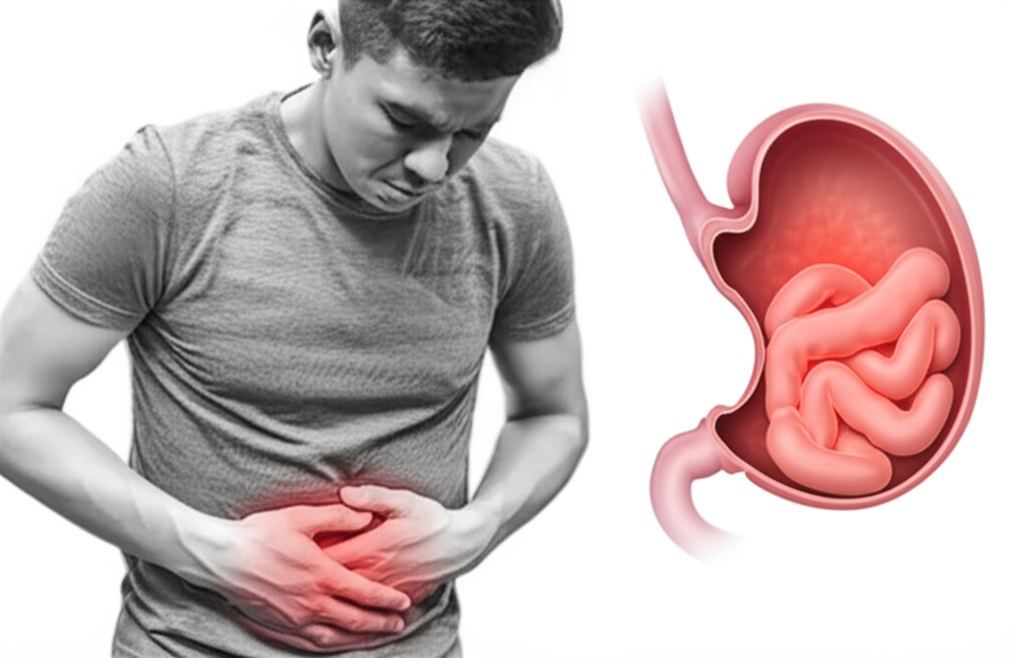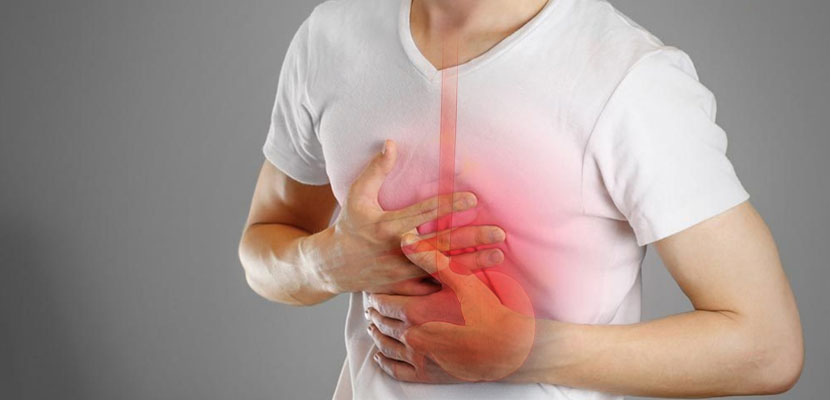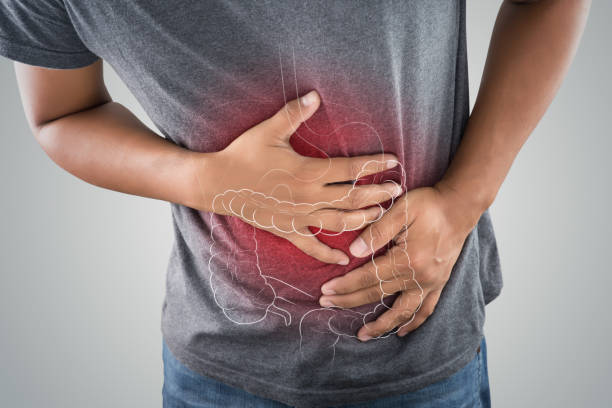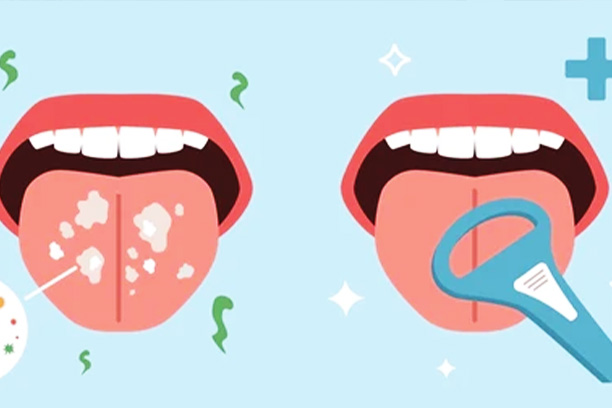Joint Pain & Arthritis
August 1, 2025Stress & Sleep Disorders
August 5, 2025Digestive Health
Digestive Health in Ayurveda: Restore Balance Naturally
In Ayurveda, the digestive system is considered the cornerstone of overall health. When your digestion is strong and balanced, your body functions optimally. But in today’s fast-paced lifestyle, issues like acidity, gas, bloating, irritable bowel syndrome (IBS), and constipation have become increasingly common, affecting people across all age groups.
At Dr. Nischal Sharma’s Panchakarma & Ayurveda Centre, we believe that true healing starts in the gut. Our approach focuses on identifying the root cause of your digestive imbalances and offering time-tested Ayurvedic treatments that restore harmony, promote regularity, and improve nutrient absorption—without harmful side effects

When Agni is Balanced, Health Flourishes – When Disturbed, Disease Follows
In Ayurveda, Agni refers to the digestive fire—the vital energy responsible for breaking down food, absorbing nutrients, and eliminating waste. A strong and balanced Agni is considered essential for good health, vitality, and immunity. When Agni functions properly, it transforms the food we eat into Ojas (life essence), leading to a sense of lightness, clarity, energy, and overall wellbeing.
However, when Agni becomes weakened, imbalanced, or sluggish—due to poor dietary habits, emotional stress, lack of routine, or seasonal changes—it leads to the accumulation of Ama, a toxic, sticky residue of undigested food. This Ama clogs the digestive and bodily channels (Srotas), resulting in a variety of discomforts and the beginning of disease.
Here are common signs and symptoms that your Agni may be compromised, as observed in Ayurveda:
-
Heaviness after meals: A sensation of sluggishness, lethargy, or a "stone-like" feeling in the stomach, even after eating light food, indicating poor breakdown and assimilation.
-
Frequent acidity or burning sensation: Especially in the chest or throat, this reflects an imbalance in Pachaka Pitta—the digestive sub-type of the Pitta dosha—leading to hyperacidity or reflux.
-
Gas, bloating, and abdominal cramps: Common indicators of disturbed Vata in the digestive tract, often due to irregular eating habits, cold or dry foods, or high stress.
-
Foul breath or coated tongue: A thick white or yellow coating on the tongue and persistent bad breath are classical signs of Ama accumulation in the stomach and oral cavity.
-
Low or erratic appetite: A fluctuating hunger pattern, such as feeling ravenous at odd hours or having no appetite during meal times, shows that Agni is not functioning in sync with your body's natural rhythms.

Heaviness after meals:
Heaviness after meals is a common yet often overlooked symptom that points to impaired digestion. It is experienced as a lingering sense of fullness, sluggishness, or even a "stone-like" weight in the stomach, despite having consumed only a light or moderate quantity of food. According to Ayurveda, this condition arises when the digestive fire, or Agni, is weakened or imbalanced. When Agni is not functioning optimally, the food isn't broken down properly, leading to the formation of Ama—toxins resulting from undigested food.
This buildup causes not only physical discomfort but also a feeling of lethargy, brain fog, and reduced enthusiasm after meals. Over time, repeated episodes of post-meal heaviness can contribute to more serious digestive disorders, poor nutrient absorption, and chronic fatigue. Ayurvedic treatments focus on rekindling the digestive fire through personalized herbal formulations, dietary adjustments, and detoxification therapies, helping restore lightness, clarity, and energy after meals.
Frequent acidity or burning sensation
Experiencing frequent acidity or a burning sensation in the chest or throat is often a clear indication of an aggravated Pachaka Pitta—the sub-dosha of Pitta responsible for digestion. This condition typically manifests as heartburn, acid reflux, or a sour taste in the mouth, especially after consuming spicy, oily, or acidic foods. In Ayurveda, such symptoms suggest that the digestive fire has become excessively sharp and intense, resulting in the overproduction of stomach acids. Stress, irregular eating habits, late-night meals, and suppression of natural urges can further aggravate this imbalance. Left unaddressed, chronic hyperacidity can damage the esophageal lining, cause inflammation, and disturb overall gut health. At Dr. Nischal Sharma’s Panchakarma & Ayurveda Centre, we focus on pacifying the excess Pitta through cooling herbs, soothing dietary changes, and therapies that calm the digestive system naturally—restoring balance and lasting relief without dependency on antacids.


Gas, bloating, and abdominal cramps:
Gas, bloating, and abdominal cramps are common digestive complaints that point to an imbalance of Vata dosha—the Ayurvedic principle governing movement, including that of the digestive system. When Vata becomes aggravated, particularly in the colon, it can lead to excessive air accumulation, erratic digestion, and discomfort in the form of tightness or spasms in the abdominal region. Contributing factors include eating at irregular times, skipping meals, consuming cold, raw, or dry foods, and living under chronic stress or anxiety. These habits disturb the natural flow of digestion and weaken Agni (digestive fire), resulting in the formation of Ama (toxins). At Dr. Nischal Sharma’s Panchakarma & Ayurveda Centre, our treatment protocol focuses on calming Vata through warm, nourishing foods, herbal teas, Abhyanga (oil massage), and digestive formulations that relieve bloating and restore gut harmony.


Low or erratic appetite:

Diet & Lifestyle for a Healthy Gut
We believe that “Food is Medicine.” Alongside medication and therapies, we provide dietary recommendations tailored to your condition.
✅ Ayurvedic Dietary Tips:
-
Eat freshly cooked, warm meals
-
Avoid eating late at night or while distracted
-
Use spices like ginger, cumin, fennel, ajwain, and coriander
-
Drink warm water instead of cold beverages
-
Avoid raw, fermented, leftover, or packaged foods
-
Consume buttermilk spiced with roasted cumin and rock salt
✅ Lifestyle Modifications:
-
Practice Vajrasana for 5-10 minutes post meals
-
Start your day with warm water and lemon or herbal decoction
-
Follow regular mealtimes and avoid overeating
-
Avoid frequent snacking, especially junk food
-
Take short walks after meals to aid digestion

Yoga and Breathing Techniques for Digestion
Certain yoga poses and breathing practices can greatly improve gut function by increasing circulation and reducing stress.
Recommended Asanas:
Pavanamuktasana (Wind-Relieving Pose):
Pavanamuktasana is a simple yet highly effective posture for promoting digestive comfort. As the name suggests, this asana helps in the release of trapped gas from the stomach and intestines, thereby relieving bloating, abdominal cramps, and heaviness. Practicing this pose regularly can stimulate peristalsis—the wave-like movements of the intestines—which aids in smoother bowel movements and supports overall digestive health. It also strengthens the lower back and abdominal muscles, making it a gentle yet beneficial addition to any digestive care routine.
Trikonasana (Triangle Pose):
Trikonasana is known for its capacity to stimulate the abdominal organs by stretching the sides of the body and improving blood circulation in the digestive tract. The twisting motion of this posture massages the liver, kidneys, and intestines, helping in detoxification and improved assimilation of nutrients. This asana also tones the core and encourages deeper breathing, which further reduces stress—one of the key triggers for digestive disturbances. Regular practice of Trikonasana can bring lightness to the stomach and support a stronger, more resilient gut.
Bhujangasana (Cobra Pose):
Bhujangasana is a rejuvenating backbend that activates the abdominal region, promoting the health of digestive organs like the pancreas, stomach, and intestines. This asana improves circulation in the gut, strengthens the spine, and helps alleviate constipation and indigestion. The gentle pressure applied on the abdomen during this pose stimulates digestive secretions, making the process of digestion more efficient. It also energizes the body and helps in reducing stress, which directly contributes to better gut health.
Vajrasana (Thunderbolt Pose):
Vajrasana is unique because it is the only yoga pose that can and should be performed immediately after eating. Sitting in Vajrasana aids digestion by directing blood flow toward the stomach and intestines, thus supporting better assimilation and preventing indigestion or acid reflux. It also calms the mind and balances Vata dosha, which often causes bloating and irregular digestion when aggravated. Practicing Vajrasana daily, even for just 5–10 minutes after meals, can drastically improve digestion and reduce digestive disorders over time.
Pranayama Techniques:
-
Kapalbhati (Skull-Shining Breath):
Kapalbhati is a powerful cleansing breathwork technique that stimulates the digestive fire (Agni) and eliminates toxins (Ama) from the gut. By engaging rapid, forceful exhalations, this practice strengthens abdominal muscles, massages the intestines, and increases metabolic activity. It’s particularly beneficial for those suffering from sluggish digestion, gas, or bloating. Kapalbhati also sharpens mental focus and energizes the body, making it a great way to kickstart the digestive system each morning.Anulom Vilom (Alternate Nostril Breathing):
Anulom Vilom balances the Ida and Pingala nadis (energy channels), harmonizing the parasympathetic and sympathetic nervous systems. This balance is essential for maintaining a calm, steady digestive rhythm. By alternating the breath between nostrils, this pranayama reduces stress, soothes the mind, and minimizes anxiety-related digestive issues like IBS or acid reflux. When practiced regularly, Anulom Vilom supports consistent appetite, better absorption of nutrients, and smoother elimination.Bhramari (Bee Breath):
Bhramari is a gentle, meditative breathing technique that creates a humming sound to relax the mind and nervous system. This practice reduces stress levels significantly, which in turn positively influences the gut-brain axis. As stress is one of the major contributors to poor digestion, bloating, and acid reflux, Bhramari acts as a soothing remedy. The calming vibrations also help regulate emotional responses, prevent binge eating, and promote mindful digestion by anchoring the body and mind in a state of relaxation.

